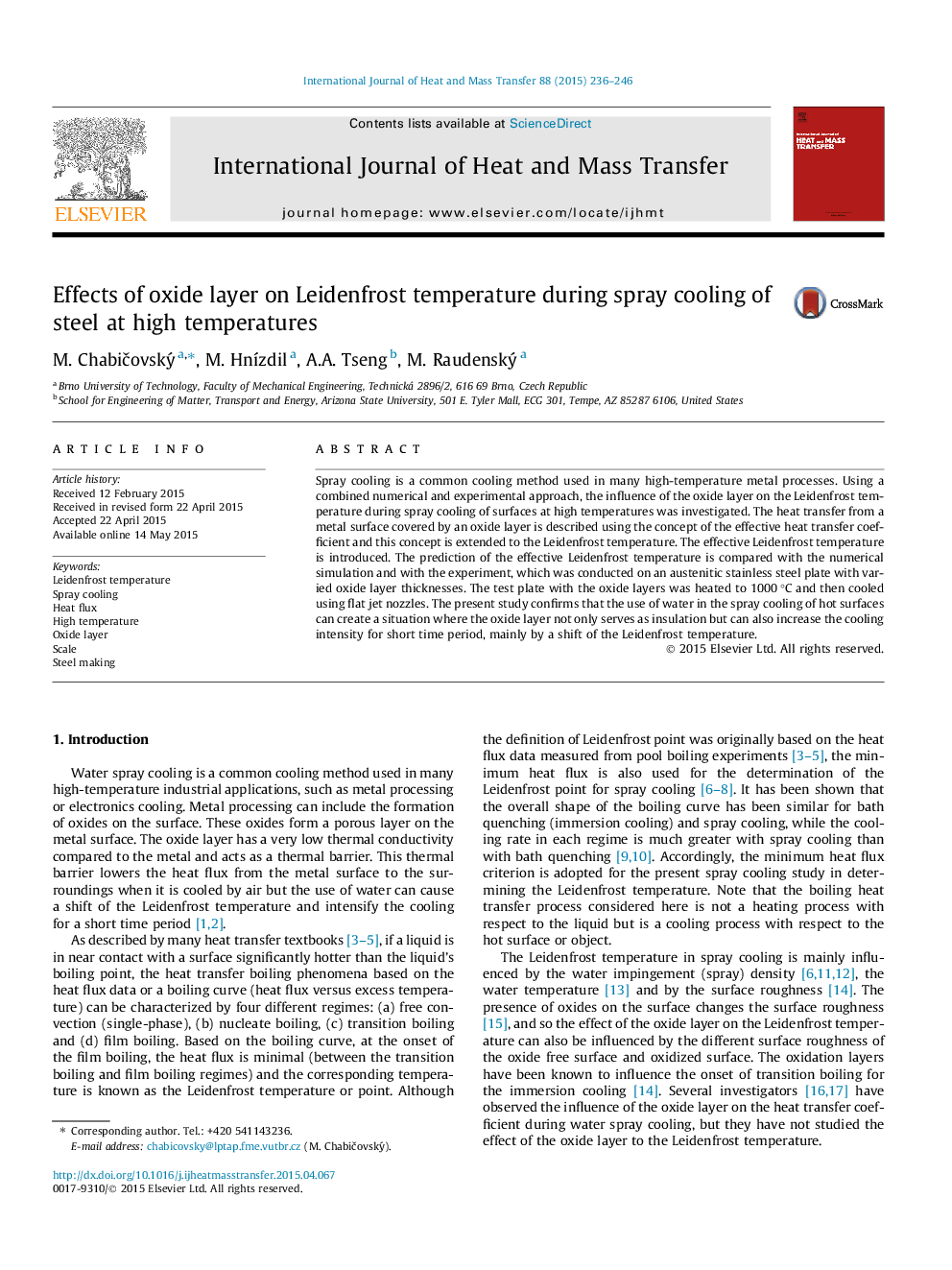| Article ID | Journal | Published Year | Pages | File Type |
|---|---|---|---|---|
| 657018 | International Journal of Heat and Mass Transfer | 2015 | 11 Pages |
•The oxide layer significantly influences the Leidenfrost temperature.•The Leidenfrost temperature increases with an increasing oxide layer thickness.•The Leidenfrost temperature increases with increasing porosity of the oxide layer.•The influence of the oxide layer on the Leidenfrost temperature can be predicted.
Spray cooling is a common cooling method used in many high-temperature metal processes. Using a combined numerical and experimental approach, the influence of the oxide layer on the Leidenfrost temperature during spray cooling of surfaces at high temperatures was investigated. The heat transfer from a metal surface covered by an oxide layer is described using the concept of the effective heat transfer coefficient and this concept is extended to the Leidenfrost temperature. The effective Leidenfrost temperature is introduced. The prediction of the effective Leidenfrost temperature is compared with the numerical simulation and with the experiment, which was conducted on an austenitic stainless steel plate with varied oxide layer thicknesses. The test plate with the oxide layers was heated to 1000 °C and then cooled using flat jet nozzles. The present study confirms that the use of water in the spray cooling of hot surfaces can create a situation where the oxide layer not only serves as insulation but can also increase the cooling intensity for short time period, mainly by a shift of the Leidenfrost temperature.
